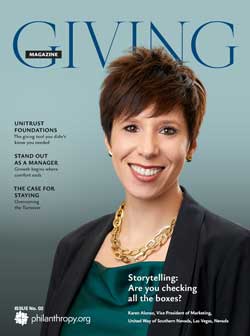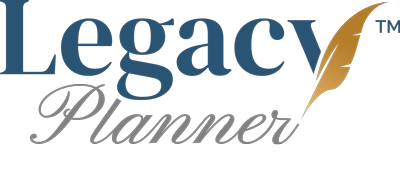Notice
More and more nonprofits are allocating funds to planned giving marketing as they recognize the need for long-term donor engagement. This quick guide outlines approximate numbers for budgeting planned giving efforts across organizations of various sizes, offering actionable benchmarks to help secure financial sustainability. Primarily targeting higher education and healthcare, the strategies here also apply to nonprofits with operating budgets between $1 million and $60 million.
Finding the Right Balance for Planned Giving: Your Guide to Campaign Success
Planned giving can be an absolute game changer for your nonprofit. That’s why a strategic, personalized and properly balanced marketing approach is so important to a successful legacy giving campaign. And one of the most critical components of that approach is your planned giving marketing budget.
Throughout this primer, you’ll see examples of what planned giving can do for your organization. Although they’re all fictional names and examples, they’re based on real success stories at institutions throughout the nation.
Here’s the first one to get you thinking:
Meet Lisa Chen, Class of ’89. For 25 years, she gave what she could—$100 here, $250 there. “I always wanted to do more,” she says, “but didn’t think I could make a real difference.” Today, through planned giving, she’s established the Chen Family First-Generation Scholarship Fund, a $2M commitment that will support students like herself for generations to come.
Lisa’s story illustrates the transformative power of planned giving—and why getting your marketing strategy right matters so much. Studies show that planned giving delivers a high return on investment, making it a strategic and financially sound move for nonprofits.
Securing Your Planned Giving Budget: Turning Challenges into Opportunities
Budget season often brings its own set of challenges—countless Excel formulas, Google presentations, and the stress of justifying every dollar. However, when it comes to planned giving, this is more than just a routine exercise. It’s about strategically investing in your institution’s future.
Consider this: a major wealth transfer is already underway. With estimates suggesting that over $68 trillion is set to shift to younger generations, and as much as $6.3 trillion could eventually be funneled to nonprofits through charitable bequests, planned giving isn’t just an add-on—it’s a cornerstone of long-term financial health. Furthermore, legacy giving from high-net-worth donors isn’t a one-time event; it often represents decades of sustained annual support. By dedicating a robust budget to planned giving, you’re not only preparing for an influx of future donations but also positioning your institution to benefit from the long-lasting impact of legacy relationships.
Ask yourself: Is our planned giving budget as robust as it needs to be to capture this monumental opportunity and ensure our mission endures?
Your Campaign’s Marketing Investment: A Strategic Framework
Your institution stands at an exciting crossroads. You’re launching an ambitious campaign, and success hinges on one crucial decision: how to invest your marketing dollars to drive both immediate impact and lasting legacy.
Here’s what works, based on data from successful campaigns across the country:
| Your Campaign Size | Smart Marketing Investment | Impact Overview |
| Under $10M | 10-15% (e.g., $1M drives $10M) | Higher percentage needed to build momentum |
| $10M-$100M | 7-12% (e.g., $7M amplifies to $100M) | Sweet spot for most institutions |
| $100M+ | 5-10% (e.g., $5M catalyzes $100M+) | Economies of scale kick in |
For Example ...
If your campaign goal is to raise \$50 million, your overall marketing budget might be approximately \$3.5 million—roughly 7-12% of your goal. Within that budget, allocating 15-20% specifically to planned giving can help you effectively target legacy donors and secure long-term support for your institution.
Where Your Marketing Investment Creates Maximum Impact
Digital Engagement (30-40% of budget)
- Personalized email journeys: Achieve 24% higher response rates.
- LinkedIn targeting: Reach 45% more qualified prospects.
Personal Connection (40-50% of budget)
- Small-group legacy planning sessions: Proven 3x more effective than mass events.
- One-on-one gift officer meetings: Yield a 68% commitment rate when properly qualified.
- Legacy society gatherings: Turn donors into ambassadors.
Print and Traditional Media (15-20% of budget)
- Targeted direct mail campaigns: Generate $12 return for every dollar spent.
- Customized legacy planning guides: Tailored by state.
- Donor impact reports: Drive powerful storytelling.
The Planned Giving Sweet Spot: Finding Your Balance
Your planned giving marketing allocation should align with your campaign priorities:
Capital Projects Focus (5-10% of marketing budget)
Perfect when you need to:
- Fund immediate construction or renovation projects.
- Meet specific short-term funding goals.
- Launch new programs with urgent timelines.
Balanced Approach (10-20% of marketing budget)
Ideal for:
- Supporting current operations while building future stability.
- Maintaining steady growth in your legacy society.
- Developing a pipeline of future major gifts.
Legacy Focus (20-30% of marketing budget)
Choose this when:
- Building your endowment is a top priority.
- You have a mature donor base approaching retirement.
- Your institution needs long-term financial sustainability.
Success Stories: Your Marketing Dollars at Work
The Class of ’75 Challenge
Twelve classmates started with a simple idea: “What if we all included the university in our estate plans?” A targeted marketing campaign highlighting their story sparked a movement. Result: $10M in new planned gifts from their class alone.
The Faculty Legacy Initiative
Dr. Sarah Wilson gave modestly for years. After seeing the impact of a colleague’s planned gift, she worked with our gift officers to establish a $500K bequest for undergraduate research. Our faculty-focused marketing campaign has since inspired five similar gifts.
The Leadership Society Effect
Spotlighting legacy donors in our quarterly impact reports led to a 40% increase in inquiries about planned giving options. Every $1 invested in these communications generated $15 in documented planned gifts.
Making It Easy: Your Path to Legacy Giving Success
For Your Team
- Training: Train all gift officers in planned giving basics.
- Tools: Provide simple conversation starters and response scripts.
- Inspiration: Share success stories monthly to inspire and educate.
For Your Donors
- Digital Solutions: Provide an online will planner (user-friendly and free).
- Guidance: Supply state-specific estate planning guides.
- Support: Arrange no-pressure consultations with our planned giving experts.
Your Next Steps
Assess Your Starting Point
- Review your current marketing allocation.
- Analyze your donor demographics.
- Identify your most pressing institutional needs.
Choose Your Focus
- Map your marketing budget to your campaign priorities.
- Set clear metrics for success.
- Plan your timeline for implementation.
Build Your Team
- Train your gift officers.
- Engage your marketing partners.
- Connect with planned giving experts.
The Balanced Future
The most successful campaigns don’t treat planned giving as an afterthought. They weave it naturally into their overall marketing strategy, creating a powerful blend of immediate impact and lasting legacy.
Remember Lisa Chen? Her story began with a simple conversation about legacy. Your next transformational donor is out there too, waiting to discover how they can make their greatest impact through planned giving.
Let’s make it easy for them to find their way home to your institution.



